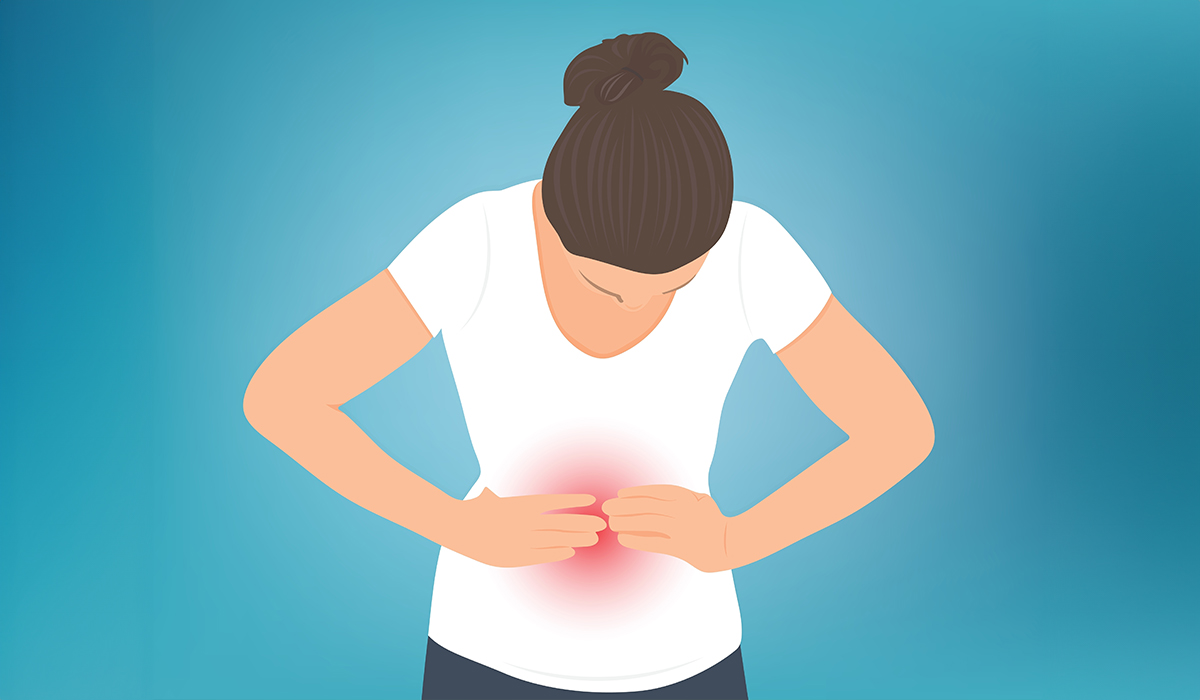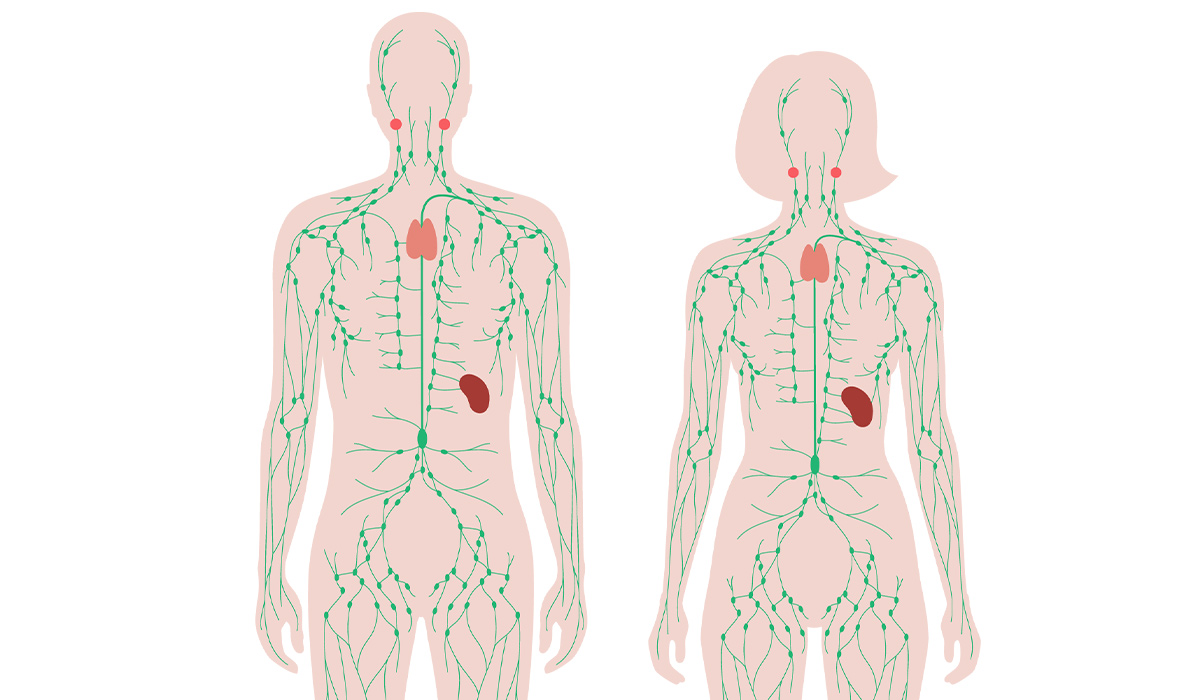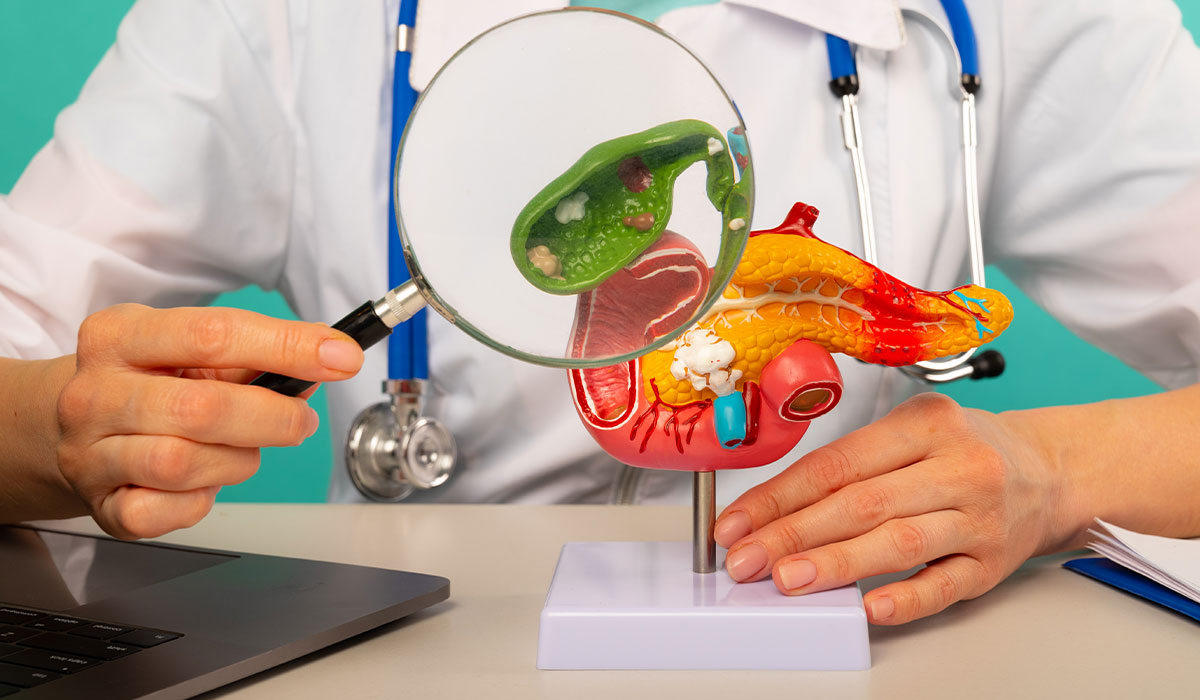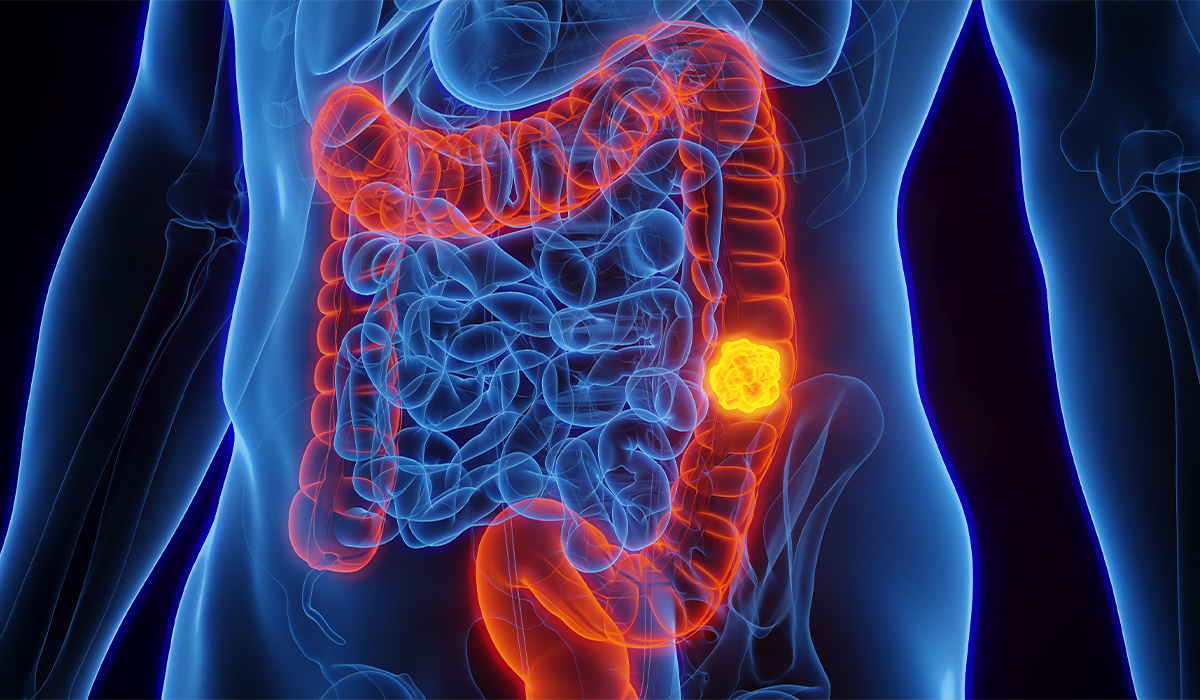Appendicitis is a part of the digestive tract. More precisely, it is the blind diverticulum of the cecum. Its size varies, depending on the weight and size of the person. Also, the location of the appendix varies greatly.
The appendix is usually located in the so-called iliac fossa on the right side of the abdomen. Sometimes, it can be found between the intestines or behind the bladder, making it difficult to diagnose appendicitis independently. It extends from the cecum, part of the large intestine so that fecal masses can lodge.
The appendix's function in the human body is still a mystery. Previous studies have shown significant amounts of lymphatic tissue inside the appendix. Therefore, it may play a role in the human immune system. In certain situations, inflammation can develop within the appendix. Regardless of what factor influenced its development, this condition causes typical symptoms known as acute appendicitis. Untreated acute appendicitis, in most cases, causes life-threatening complications for the patient.
Appendicitis – is an acute or chronic disease of the abdominal cavity. The formation of inflammation in the appendix is most often explained by obstruction of its lumen![]() , although not in all cases. The disease can occur at any age and is among the most common causes of acute abdominal pain. Symptoms of inflammation can appear at any time in the case of acute inflammation.
, although not in all cases. The disease can occur at any age and is among the most common causes of acute abdominal pain. Symptoms of inflammation can appear at any time in the case of acute inflammation.
It is diagnosed in young children and adults, although it most often affects children aged 6-10. Rashes of this type usually require a visit to the hospital and prompt surgery, as otherwise, the condition can even lead to severe complications and, ultimately, death.
Various factors can cause inflammation of the appendix. The general and direct cause of appendicitis is the closure of its lumen. Thus, this situation can be the result of many reasons. These include:
Appendicitis is most often caused by narrowing or obstruction of the appendix lumen. Block of the appendix lumen can occur in various ways. Fecal stones![]() and overgrowth of lymphatic tissue
and overgrowth of lymphatic tissue![]() in the submucosa of the appendix are cited as the most common cause. Also, the coexistence of these two factors is possible.
in the submucosa of the appendix are cited as the most common cause. Also, the coexistence of these two factors is possible.
The presence of a stone in the lumen of the appendix increases the risk of appendiceal rupture. Rarer causes of blockage of the appendix lumen are parasites![]() , most often pinworms. Inflammation of the appendix can also result from previous inflammatory conditions.
, most often pinworms. Inflammation of the appendix can also result from previous inflammatory conditions.
It may also be related to the presence of Jackson's membrane![]() , a congenital intestinal defect, or a neoplasm such as a carcinoma. Blockage of the lumen of the appendix can be caused by a foreign body entering it. A theory also points to a viral infection as the primary cause of appendicitis.
, a congenital intestinal defect, or a neoplasm such as a carcinoma. Blockage of the lumen of the appendix can be caused by a foreign body entering it. A theory also points to a viral infection as the primary cause of appendicitis.

There are the following types of appendicitis:
Acute appendicitis is one of the most common abdominal diseases and causes of abdominal pain requiring surgical treatment. The most characteristic of the symptoms of acute appendicitis is just severe abdominal pain![]() . The pain of acute appendicitis is of an increasing nature. Almost always, in acute appendicitis, there is nausea and vomiting. Acute appendicitis is an ailment that can directly result from the closure of its outlet to the cecum. Untreated, the disease in most patients leads to peritonitis, a life-threatening condition.
. The pain of acute appendicitis is of an increasing nature. Almost always, in acute appendicitis, there is nausea and vomiting. Acute appendicitis is an ailment that can directly result from the closure of its outlet to the cecum. Untreated, the disease in most patients leads to peritonitis, a life-threatening condition.
Chronic appendicitis is the vast minority of cases of inflammation in this body part. The symptoms of chronic appendicitis take several months![]() to manifest themselves. Patients have problems with defecation and experience moderate abdominal pain on the right side of the body. Chronic appendicitis gives symptoms for several months. Symptoms are characterized by recurrences, which subside over time. If diagnosed soon enough, chronic appendicitis may not require – unlike acute appendicitis – surgical treatment.
to manifest themselves. Patients have problems with defecation and experience moderate abdominal pain on the right side of the body. Chronic appendicitis gives symptoms for several months. Symptoms are characterized by recurrences, which subside over time. If diagnosed soon enough, chronic appendicitis may not require – unlike acute appendicitis – surgical treatment.
In this case, the mucosa of the appendix is distended, visibly congested. There is serous-bloody fluid in the lumen of the appendix. Sometimes there are enlarged mesenteric intestinal lymph nodes and a small number of erosions. When only the wall of the appendix becomes congested and swollen![]() , and it is not permeable to bacteria, nor is there any exudation or necrosis. We have an early stage of appendicitis, what is called appendicitis catarrhalis.
, and it is not permeable to bacteria, nor is there any exudation or necrosis. We have an early stage of appendicitis, what is called appendicitis catarrhalis.
The appendix is enlarged, tense, bloody, and thickened in this case. In addition, it is filled with purulent fluid – pus![]() . The lesions occur throughout the thickness of the appendix. In the macroscopic picture: the enlarged appendix is swollen with dilated vessels and exudate. The lumen has purulent content, and serous-purulent fluid often appears in the peritoneal cavity. There are extensive erosions in the mucosa and venous thrombosis. The appendix must be removed, and the abdomen must be thoroughly flushed out if purulent fluid is diagnosed in the abdominal cavity.
. The lesions occur throughout the thickness of the appendix. In the macroscopic picture: the enlarged appendix is swollen with dilated vessels and exudate. The lumen has purulent content, and serous-purulent fluid often appears in the peritoneal cavity. There are extensive erosions in the mucosa and venous thrombosis. The appendix must be removed, and the abdomen must be thoroughly flushed out if purulent fluid is diagnosed in the abdominal cavity.
In this case, lesions occur throughout the thickness of the appendix. The wall of the appendix becomes congested and swollen. Its permeability to bacteria increases and gangrenous lesions with foci of necrosis appear. There may be dark, single, or multiple foci of necrosis in the appendix wall. The appendix is bloated and changes color (to green, purple or black) on macroscopic imaging. Inflammatory infiltration occupies all layers of the appendix wall with foci of necrosis and extensive erosions in the mucosa. Perforation![]() of the appendix (rupture) causes complications: abscess, periapical infiltration, or peritonitis. It is the most severe characteristic of appendicitis.
of the appendix (rupture) causes complications: abscess, periapical infiltration, or peritonitis. It is the most severe characteristic of appendicitis.
The result of appendicitis has various steps, which determine the effect of inflammation and what it means in terms of the intensity of damage to the body. As a result, the risk of loss of health or life increases. Changes in the appendix can have various nature. Distinguish the following changes that occur with the development of inflammation![]() of the appendix:
of the appendix:
Appendicitis is most often initiated by swelling of the submucosal tissue. The swollen tissue blocks the lumen of the appendix. Rarely a fecalith is found in the inflamed appendix. The typical consequence of this swelling is compression of lymphatic vessels, veins, and eventually arteries with excessive bacterial growth in the lumen of the appendix.
Inflammatory changes lead to the fusion of the appendix wall and even gangrene. The inflammatory process can involve, in addition to the appendix, the bordering network, mesentery, and loops of the intestines. This compact inflammatory mass can sometimes be palpable through the abdominal coatings. If perforation often occurs, restriction of the lesion and formation of an abscess.
As for acute appendicitis and its accompanying symptoms in adults, they are usually characteristic. In children, on the other hand, a wide range of symptoms make diagnosis difficult. Typical symptoms of appendicitis include:

The first symptom is mostly pain![]() experience. The pain is usually not stationary but moves all the time. There is an increasing sensation of abdominal pain when the abdomen is pressed, which subsides when lying down and rolling up the legs. Abdominal pain also increases when moving.
experience. The pain is usually not stationary but moves all the time. There is an increasing sensation of abdominal pain when the abdomen is pressed, which subsides when lying down and rolling up the legs. Abdominal pain also increases when moving.
With appendicitis, diarrhea, nausea![]() , vomiting
, vomiting![]() , and a lack of appetite are common. But stool and gas retention due to intestinal paralysis are also possible. There may be abdominal tension, muscle defense, and a persistent fever or sub-febrile state. In the case of the chronic form of appendicitis, constant loss of appetite and malaise can cause weight loss
, and a lack of appetite are common. But stool and gas retention due to intestinal paralysis are also possible. There may be abdominal tension, muscle defense, and a persistent fever or sub-febrile state. In the case of the chronic form of appendicitis, constant loss of appetite and malaise can cause weight loss![]() . If you suspect appendicitis, you should see your doctor immediately for a diagnosis.
. If you suspect appendicitis, you should see your doctor immediately for a diagnosis.
Symptoms of appendicitis in children can be a bit more challenging to diagnose as, unfortunately, the child is usually unable to determine the nature of the pain. Symptoms of appendicitis in children include lack of appetite, reduced activity, and crying. The clinical picture of acute appendicitis may also be altered when other diseases coexist.
The first and primary method of diagnosing appendicitis is a detailed medical history. In making a correct diagnosis, especially in cases of atypical clinical picture, laboratory results can be supported and imaging studies. However, it should be remembered that the risk of complications increases with each hour after the onset of symptoms. In children, the risk is much higher than in adults. The following tests are used to diagnose appendicitis:
The doctor performs a physical examination, as well as a detailed examination of the abdomen (ultrasound or CT scan![]() ), intending to locate the site of pain accurately. In most cases, a correct diagnosis of appendicitis can be made after a thorough history and physical examination.
), intending to locate the site of pain accurately. In most cases, a correct diagnosis of appendicitis can be made after a thorough history and physical examination.
But in addition to it the diagnosis, blood, and urine tests![]() are also done to diagnose inflammation and exclude different possible ailments, which include diseases of the reproductive system and urinary tract. The doctor may also order a gynecological examination in women who complain of severe and long-term abdominal pain since similar symptoms often appear when the cyst ruptures.
are also done to diagnose inflammation and exclude different possible ailments, which include diseases of the reproductive system and urinary tract. The doctor may also order a gynecological examination in women who complain of severe and long-term abdominal pain since similar symptoms often appear when the cyst ruptures.
Unfortunately, diagnostic mistakes are common, and undetected appendicitis causes complications. Most of these errors involve children and adults with atypical clinical presentation.
When appendicitis develops a peri-appendiceal infiltration, such a condition is treated conservatively, that is, with antibiotics. After a few weeks, following imaging studies, the appendix may need to be removed as planned. Most often, treatment of an inflamed appendix involves surgical removal.
It is crucial because if the appendix is left inflamed, it can pose risks to the patient's health and life—surgery by classical or laparoscopic methods. The most common surgical operation done urgently is removing the appendix due to inflammation. Indications for elective surgery are much rarer. If such occurs, the procedure is done using the laparoscopic method.
The classical method of appendicitis surgery: The patient is in a supine position under general anesthesia. The surgeon opens the abdominal cavity with a cut to get to the appendix and pull it out. It is a more invasive method that requires a more extended comeback period after surgery and the healing process.
The laparoscopic method of appendicitis surgery: The skin is incised in three places – above the navel, in the right lower abdomen, and in the left lower abdomen. The incisions are small, and a camera and instruments are inserted into the abdominal cavity through them. The surgeon dissects and cuts off the appendix. It is a less invasive method used for milder appendicitis conditions.

Appendicitis is characterized by specific abdominal pain. There are many other diseases during which this symptom also appears. Therefore, when diagnosing appendicitis, it is necessary to keep in mind the possibility of such diseases and conditions as:
Inflammatory bowel disease – is an extensive group of conditions manifested by digestive disorders and some accompanying symptoms. General symptoms include abdominal pain, vomiting, and diarrhea. Therefore, the diagnostic picture of this disease is very similar to a set of symptoms of appendicitis. Inflammatory bowel disease can involve the small and large intestines and often affects the entire lower gastrointestinal tract.
Meckel's diverticulitis – Meckel's diverticulum is a congenital disability occurring in the terminal ileum. So far, it has not been possible to identify factors that might increase the risk of this abnormality. Unpleasant symptoms or discomforts mainly occur when serious complications of Meckel's diverticulum occur. Patients may then experience ulceration, inflammation, bleeding, or intestinal obstruction.
Peritonitis – is an inflammation involving the membrane lining the entire abdominal cavity from the inside. Most often, peritonitis is caused by bacteria entering the peritoneal cavity. When it involves the whole peritoneal cavity, it is very violent and dangerous. Peritonitis causes paralytic obstruction of the gastrointestinal tract, i.e., stoppage of bowel function.
Crohn's disease – This chronic inflammation of the intestines manifests itself with diarrhea, abdominal pain, anemia, weight loss, and malnutrition, and its late complication can be colon cancer. The inflammatory process caused by this disease involves the wall of the gastrointestinal tract and can affect different areas of it – from the mouth to the anus. Phases of exacerbation and remission characterize Crohn's disease.
Acute pancreatitis – The leading symptom of acute pancreatitis is persistent and severe pain in the epigastrium that persists for hours. It usually lasts for more than a day, appears suddenly and gradually increases in severity, and is accompanied by nausea, vomiting, and often fever. It is also a diagnostic picture very similar to appendicitis. Appropriate medical tests can distinguish between the two diseases. In most cases, pancreatitis follows gallstones.
Hepatitis – The symptoms of viral hepatitis vary widely, depending on whether it is acute or chronic. However, symptoms include abdominal pain, vomiting, and fever. In addition to these symptoms, jaundice symptoms are often present. Hepatitis is an inflammatory condition that is most often triggered by the presence of viruses, alcohol, or an improper diet.
Inflammation of the appendages – Inflammation is a condition primarily affecting women who have sexual intercourse, in which the ovaries and fallopian tubes become infected. The cause of inflammation of the appendages is usually bacteria that enter the upper genital tract from the vagina. The symptoms that then appear are severe lower abdominal pain increasing during sexual intercourse and gynecological examination and fever and chills. Since lower abdominal pain occurs in female diseases, suspected appendicitis requires a gynecological exam.
Constipation – Depending on the type of constipation, patients may struggle with different bowel problems. Abdominal pain is not a typical symptom of constipation, but it sometimes occurs in patients with this condition. Recurrent abdominal pain and a change in the appearance or frequency of bowel movements may instead indicate irritable bowel syndrome with predominant constipation.
Appendicitis in pregnant women can be much more challenging to diagnose. If a woman suspects appendicitis, she should contact her doctor immediately, as treatment may be necessary. For pregnant women, the doctor may order a gynecological examination. It is designed to rule out gynecological and obstetric causes, which include inflammation of the ovaries and fallopian tubes.
The choice of treatment depends on the pregnancy's severity and inflammation symptoms. In the case of acute appendicitis, even surgery may be necessary. During pregnancy, the chances of acute appendicitis increase. Rupture of the appendix is associated with an increased likelihood of pregnancy loss![]() .
.

Complications of the appendix most often occur in people who have gone to the doctor too late for appendicitis. Complications that can occur through appendicitis include:
Appendicitis can lead to bacteria entering the peritoneal cavity due to a break in the continuity of the digestive tract and leakage of its contents into the peritoneal cavity. Due to the area affected, limited and diffuse peritonitis can be distinguished. The prognosis for limited peritonitis is good, as it develops only at the site of the disrupting agent. Diffuse inflammation, on the other hand, occurs throughout the peritoneal cavity, into which a large amount of infected content overflows – a life-threatening condition requiring surgery.
One of the more dangerous complications of acute appendicitis is perforation of the appendix and the resulting peritonitis. Perforation of the appendix usually occurs on the second or third day. Perforation can be evidenced by sudden, severe pain, elevated heart rate, and signs of peritoneal irritation. A fecalith in the lumen of the appendix increases the risk of perforation. Perforation of the appendix can lead to an appendiceal abscess, or diffuse peritonitis, an infection of the entire abdominal and pelvic mucosa.
Perianal abscess is a severe complication of appendicitis. It is the body's battle against peritoneal infection. The abscess is a cluster of pus, bacteria, and damaged tissues. In this case, the body temperature rises to high levels. Also noted is a significantly elevated heart rate and leukocytosis.
The appendix is a part of the gastrointestinal tract whose functions are unknown. There are speculations that it supports the functioning of the immune system. Many factors can cause appendicitis. Due to its peculiar structure, it is relatively easy for its lumen to become obstructed and thus develop inflammation. Several types of appendicitis can be distinguished, which characterize its course.
The first symptom of appendicitis is most often abdominal pain. As the symptoms worsen, the pain usually localizes on the right side of the body. Nausea, lack of appetite, vomiting, diarrhea, or constipation may occur. Undiagnosed or diagnosed too late, appendicitis can end with rupture of the appendix and spillage of its contents in the abdominal cavity, thus peritonitis and an immediately life-threatening condition.
Misdiagnosis most often occurs in children. Various tests can make the diagnosis of appendicitis. Treatment usually involves surgery, but antibiotic therapy is possible in mild conditions. Many diseases can produce similar symptoms to appendicitis, so other types of diseases, such as inflammatory bowel disease, should also be included in the diagnosis.
Appendicitis is possible in pregnant women; even then, surgery may be necessary. Untreated appendicitis can lead to severe complications and is life-threatening.
Table of Contents

Peritonitis is inflammation of the membrane covering the abdominal cavity and internal organs. It requires immediate medical attention. Check out… read more »

Abdominal pain refers to discomfort or pain felt anywhere in the area between the chest and the pelvis, commonly known… read more »

Ileus is a medical condition that stops the passage of food through the digestive tract. What are its symptoms and… read more »

A stoma is a surgically created opening that leads urine or faeces outwards. The procedure of placing a stoma is… read more »

The human lymphatic system is an important support for the immune, circulatory and even digestive systems. What are its functions?… read more »

The gallbladder performs very important functions in the human body. Problems with its functioning can lead to diseases. Learn about… read more »

Colon cancer is a common disease with a high mortality rate. Find out how to recognise the first signs of… read more »

A surgeon is a medical doctor who specializes in performing operations to treat diseases, injuries, and deformities. read more »

Pneumothorax is a condition that develops as a result of air entering the pleural cavity. What are the causes and… read more »